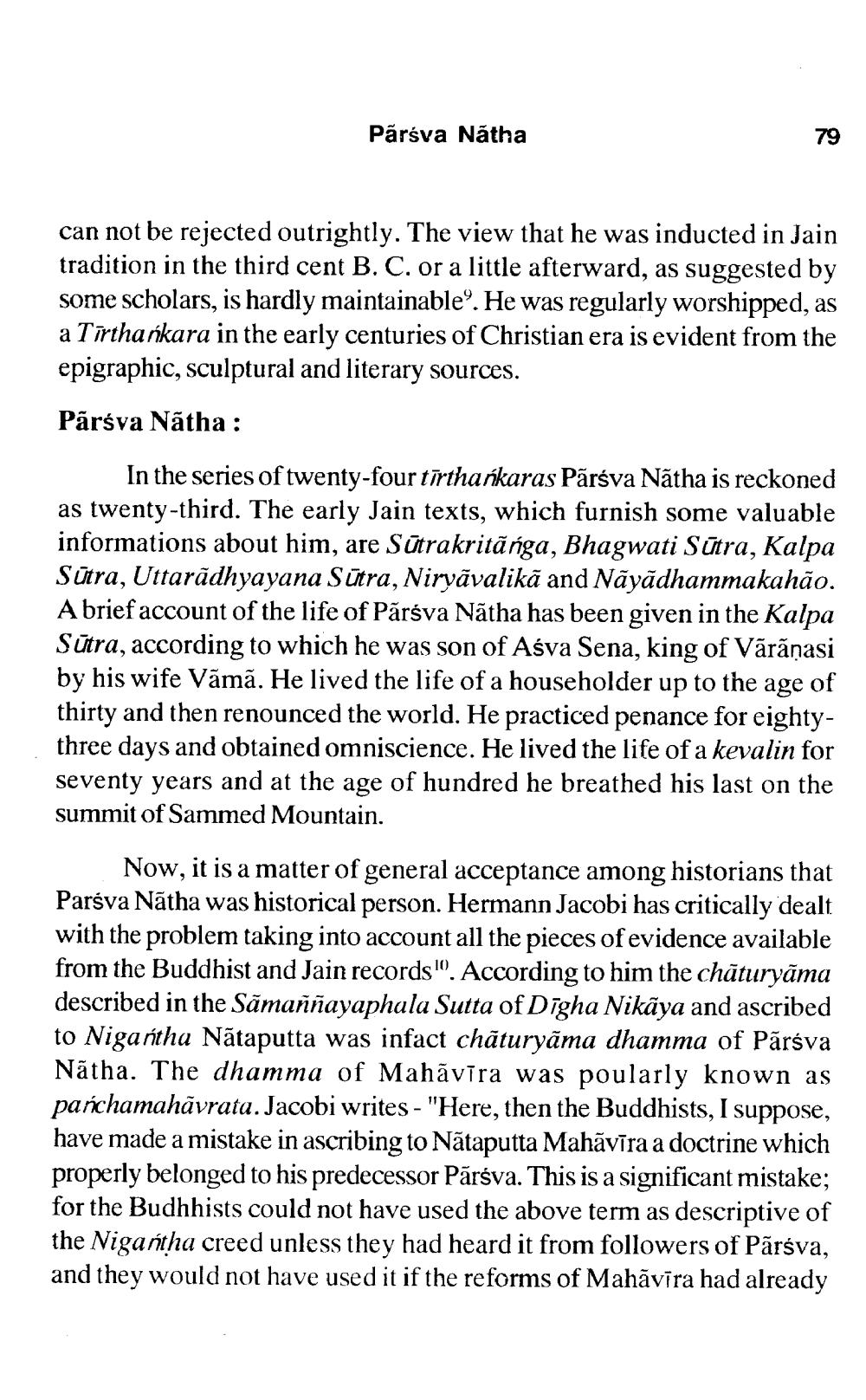________________
Pãráva Nátha
79
can not be rejected outrightly. The view that he was inducted in Jain tradition in the third cent B. C. or a little afterward, as suggested by some scholars, is hardly maintainable'. He was regularly worshipped, as a Tirtharkara in the early centuries of Christian era is evident from the epigraphic, sculptural and literary sources.
Pārśva Nátha :
In the series of twenty-four tirthańkaras Pãráva Nátha is reckoned as twenty-third. The early Jain texts, which furnish some valuable informations about him, are Sūtrakritānga, Bhagwati Sūtra, Kalpa Sutra, Uttarādhyayana Sữra, Nirvāvalika and Nāyādhammakahão. A brief account of the life of Păráva Nãtha has been given in the Kalpa Sūtra, according to which he was son of Aśva Sena, king of Vārāṇasi by his wife Vámã. He lived the life of a householder up to the age of thirty and then renounced the world. He practiced penance for eightythree days and obtained omniscience. He lived the life of a kevalin for seventy years and at the age of hundred he breathed his last on the summit of Sammed Mountain.
Now, it is a matter of general acceptance among historians that Parśva Nātha was historical person. Hermann Jacobi has critically dealt with the problem taking into account all the pieces of evidence available from the Buddhist and Jain records 10. According to him the châturyāma described in the Sāmaññayaphala Sutta of Dīgha Nikāya and ascribed to Nigantha Nãtaputta was infact chăturyāma dhamma of Pārsva Nãtha. The dhamma of Mahāvīra was poularly known as pańchamahāvrata. Jacobi writes - "Here, then the Buddhists, I suppose, have made a mistake in ascribing to Nãtaputta Mahāvīra a doctrine which properly belonged to his predecessor Pārsva. This is a significant mistake; for the Budhhists could not have used the above term as descriptive of the Nigantha creed unless they had heard it from followers of Pārśva, and they would not have used it if the reforms of Mahāvīra had already




